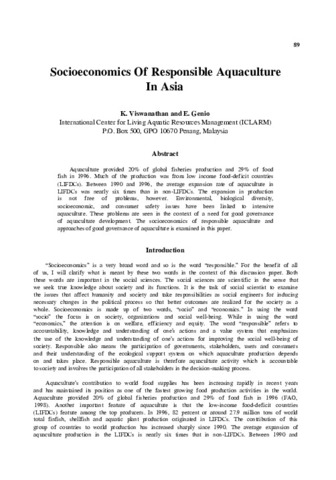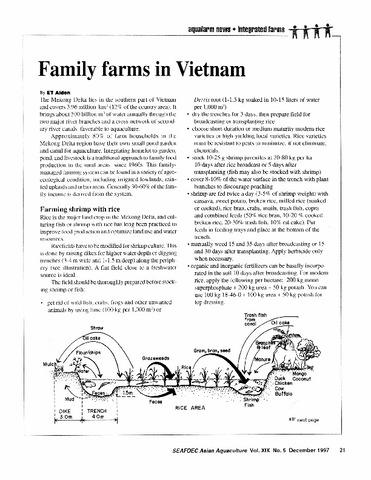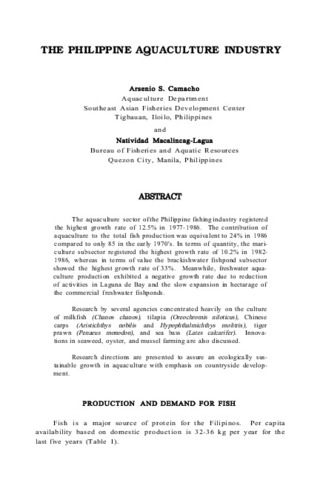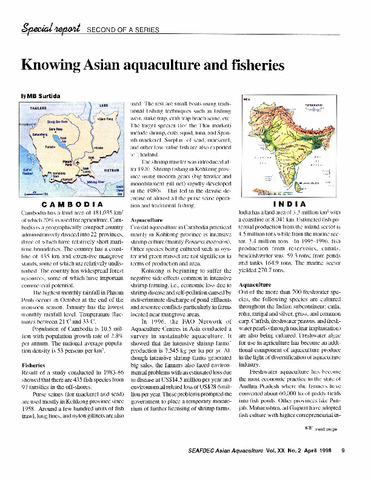Socioeconomics of responsible aquaculture in Asia

ရှာဖွေ/ဖွင့်ပါ။Open
ရက်စွဲ
2001Page views
490Share
စိတ္တဇ
Aquaculture provided 20% of global fisheries production and 29% of food fish in 1996. Much of the production was from low income food-deficit countries (LIFDCs). Between 1990 and 1996, the average expansion rate of aquaculture in LIFDCs was nearly six times than in non-LIFDCs. The expansion in production is not free of problems, however. Environmental, biological diversity, socioeconomic, and consumer safety issues have been linked to intensive aquaculture. These problems are seen in the context of a need for good governance of aquaculture development. The socioeconomics of responsible aquaculture and approaches of good governance of aquaculture is examined in this paper.
Suggested Citation
Viswanathan, K., & Genio, E. (2001). Socioeconomics of responsible aquaculture in Asia. In L. M. B. Garcia (Ed.), Responsible Aquaculture Development in Southeast Asia. Proceedings of the Seminar-Workshop on Aquaculture Development in Southeast Asia organized by the Aquaculture Department, Southeast Asian Fisheries Development Center, 12-14 October 1999, Iloilo City, Philippines (pp. 89-97). Tigbauan, Iloilo, Philippines: Aquaculture Department, Southeast Asian Fisheries Development Center.
ဘာသာရပ်
စုစည်းမှုများ စုစည်းမှုများ
- ADSEA '99 [21]
Related items
Showing items related by title, author, creator and subject.
-
Family farms in Vietnam
Aldon, Eva T. (Aquaculture Department, Southeast Asian Fisheries Development Center, 1997) -
The Philippine aquaculture industry
Camacho, Arsenio S.; Macalincag-Lagua, Natividad (Aquaculture Department, Southeast Asian Fisheries Development Center, 1988)The aquaculture sector of the Philippine fishing industry registered the highest growth rate of 12.5% in 1977-1986. The contribution of aquaculture to the total fish production was equivalent to 24% in 1986 compared to ... -
Knowing Asian aquaculture and fisheries
Surtida, Marilyn B. (Aquaculture Department, Southeast Asian Fisheries Development Center, 1998-04)This article is the second of four parts.




